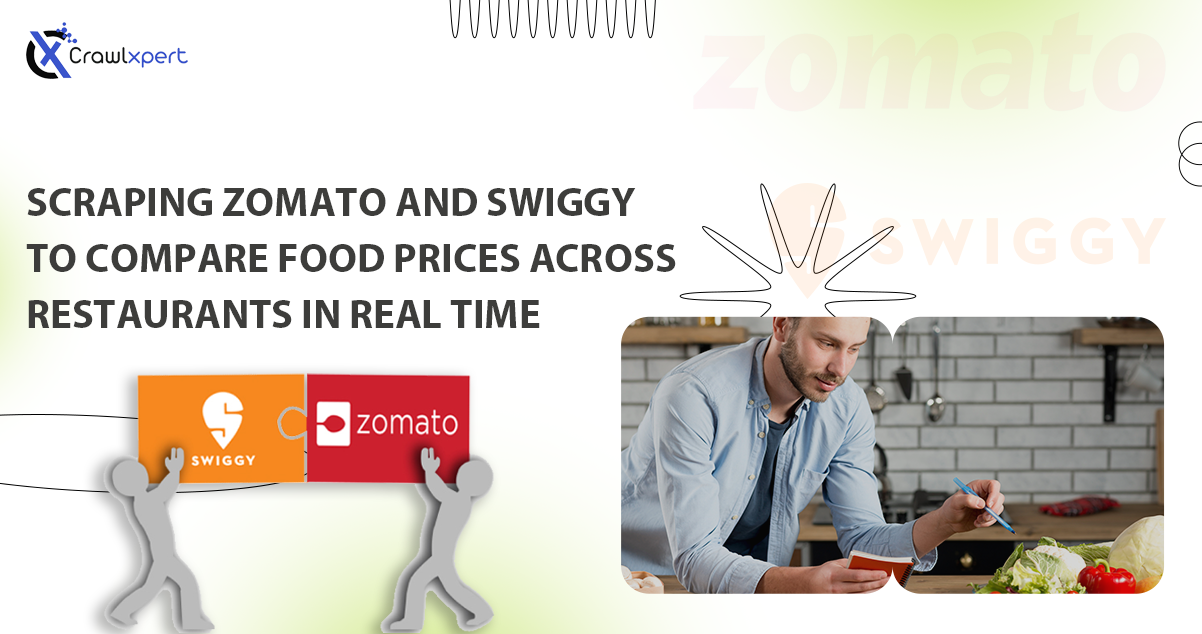
Scraping Zomato and Swiggy to Compare Food Prices Across Restaurants in Real Time
Apr 03, 2025
Introduction
In the fast-paced business of food delivery, price comparison remains a central customer triggering factor. In markets like India dominated by Zomato and Swiggy in the food delivery space, restaurants need real-time pricing information to stay ahead of their competitors. Web scraping provides a good avenue to get food prices across various restaurants to make informed decisions.
This blog predominantly covers the application of web scraping to compare food prices on Zomato and Swiggy, the methodology involved, the challenges faced in this endeavor, and the ethical implications.
The Need for Real-Time Price Comparison
1. Understanding Market Trends
- Detect the time when consumers have high prices in different locations.
- Find seasonal price increases with seasonal fluctuations in demand.
2. Obtaining Competitive Advantage
- Restaurants can dynamically change their menu rates when monitoring competitors for price purposes.
- Help run the right promotions and discounts.
3. Increasing Customer Retention
- Competitive pricing would cause customers not to leave a restaurant with a similar offering outside.
- Analyzing competitors' packages and combos can provide better-priced strategies.
How Web Scraping Works for Zomato and Swiggy
1. Key Data Fields to Extract
To compare food prices effectively, restaurants need to extract the following information:
- Restaurant Name – Identify competing restaurants.
- Menu Items – Extract food items offered by competitors.
- Prices – Compare prices of similar items.
- Discounts & Promotions – Analyze special offers available.
- Delivery Charges – Understand the total cost to customers.
- Customer Ratings – Evaluate pricing impact on customer satisfaction.
2. Methods of Scraping Food Prices
a. Web Scraping Techniques
- Using Python Libraries: Scrapy, BeautifulSoup, and Selenium can help extract price data from food delivery websites.
- Headless Browsers: Tools like Puppeteer and Playwright help in scraping dynamic content.
- APIs (If Available): Some platforms may offer APIs for retrieving structured pricing data.
b. Using Third-Party Data Providers
- Web scraping services like CrawlXpert can automate the data collection process.
- Cloud-based scraping tools such as ParseHub and Apify offer easy solutions for price comparison.
Challenges and Solutions in Scraping Zomato and Swiggy
1. Anti-Scraping Measures
- IP Blocking: Platforms often block repeated automated requests.
- CAPTCHAs: Additional security layers prevent bots from accessing data.
- Dynamic Content Loading: JavaScript-rendered pages make data extraction difficult.
Solutions:
- Use rotating proxies to avoid detection.
- Implement headless browsing to mimic real user interactions.
- Use CAPTCHA-solving services to handle security barriers.
2. Data Accuracy and Management
- Frequent menu updates can lead to outdated scraped data.
- Storage and structuring require efficient database management.
Solutions:
- Schedule regular scraping intervals to update price comparisons.
- Store extracted data in well-structured SQL or NoSQL databases.
Ethical and Legal Considerations
- Always adhere to robots.txt guidelines of Zomato and Swiggy.
- Avoid overloading servers with excessive requests.
- Ensure data usage complies with legal and ethical standards.
Conclusion
Real-time food price observation from Zomato and Swiggy, for example, is achieved through web scraping. Automated scraping and ethical practices of data extraction can help restaurants refine their prices and become more competitive with their opposing dealers in the food delivery market.
For businesses that want their data extracted hassle-free, platforms such as CrawlXpert provide clients with weekly expert services in web scraping, leaving the restaurant with verified actionable insights helping them optimize their pricing strategies.

